Europe
How Soviet farm planning gave Ukrainian troops vital battlefield real estate
The Washington Post October 28, 2024
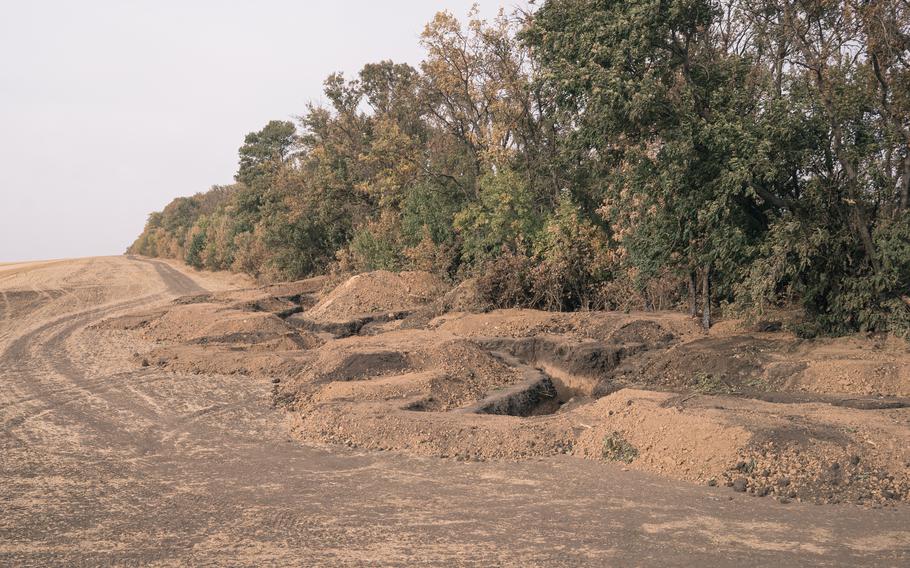
A trench along a windbreak in the Donetsk region. (Alice Martins for The Washington Post)
DONETSK REGION, Ukraine — The Ukrainian howitzer barrel peeked out just enough from the foliage to train on the Russian forces a few kilometers away. The crew prepared to fire.
“Gun!” a crew member shouted a split second before pulling the cord on a U.S.-made M101 cannon, sending a shell careening through the air. The gunner ejected a smoking casing and logged yet another strike in his notebook.
Everything that made this firing position happen — concealment from drones, the time and space needed to build a fortified bunker and a road to access it all — is rooted in Soviet-era agricultural planning. Rows of trees, known as windbreaks, were planted decades ago throughout eastern and southern Ukraine to fortify adjacent crop fields and help reduce soil erosion from the bitter wind.
In a modern fight across the Ukrainian steppe, where it is nearly impossible to hide from the digital eyes of day and night drone surveillance, windbreaks have become one of the most valuable terrain features that Russian and Ukrainian troops fight over. They provide a refuge for soldiers to gather for assaults, take cover from enemy fire or, in the quiet moments, listen to the wind blow through the branches.
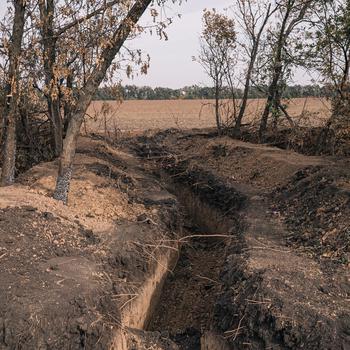
A trench within a tree line overlooks another row in the distance in the Donetsk region of Ukraine. (Alice Martins for The Washington Post)
Control over strategic windbreaks can make a difference in winning a fight or losing one, soldiers said.
“The tree line is life,” said a member of the gun team in the National Guard’s 15th Brigade. He provided only his first name, Oleksandr, in line with Ukrainian military protocols.
Though originally conceived of in the 19th century to stop soil degradation, it was under Soviet leader Joseph Stalin that the lines of trees were planted all over the steppes.
Movchan Valentyna, director of the Institute of Biomedical Technologies at University Ukraine, described it as “perhaps the only positive legacy left from those terrible times.”
“Someone told the ‘Father of Nations’ that it is possible to get a 30% increase in harvest only by planting forest belts — and it is true,” she said, describing how he then mobilized huge numbers of people to plant them.
In addition to protecting topsoil, the tree belts became reservoirs of biodiversity and homes to pollinators and predators that nurtured the crops and protected them from pests.
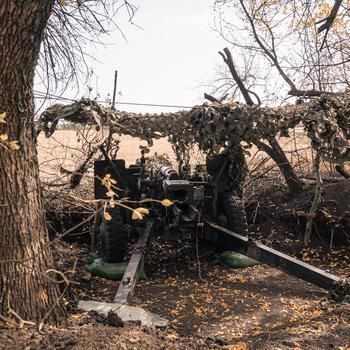
A howitzer is concealed within a tree line. (Alice Martins for The Washington Post)
In the current war, the windbreaks have proved valuable across the front for units to gather, especially in rural areas where buildings are too few or have been flattened in artillery strikes. If they had never been planted decades ago, one soldier said, Ukrainian and Russian soldiers would probably need to dig trenches several meters deeper just to have a place to take cover.
In the Luhansk region last fall, a Ukrainian drone team with the 68th Jaeger Brigade accompanied by Washington Post reporters drove to the edge of a windbreak and settled in for their mission to harry nearby Russian troops. The windbreak, a few meters wide, doubled as a covered footpath for troops heading to the front line or leaving for a brief respite.
The canopy allowed concealment, but Russian helicopters and drones crisscrossed the sky above, certain the enemy lurked somewhere in the brush. Occasional rocket and artillery strikes thudded inside the windbreak, an apparent effort by Russian forces to get lucky with their fire.
This month, the 15th Brigade weighed several factors before choosing the spot for its howitzer as part of a mission in the Donetsk region to curb the Russian advance near the town of Selydove. Over tea and coffee at a small wooden table, they discussed the fine art of windbreak selection for an artillery unit.
Typically, a commander will receive orders from his superior on a general location and the direction to fire and then scout for viable locations. Wide and dense windbreaks are prized, soldiers said, affording more options to conceal vehicles and equipment. Soldiers will then dig into the soil to install the gun and a separate shelter position to cover with logs and dirt.
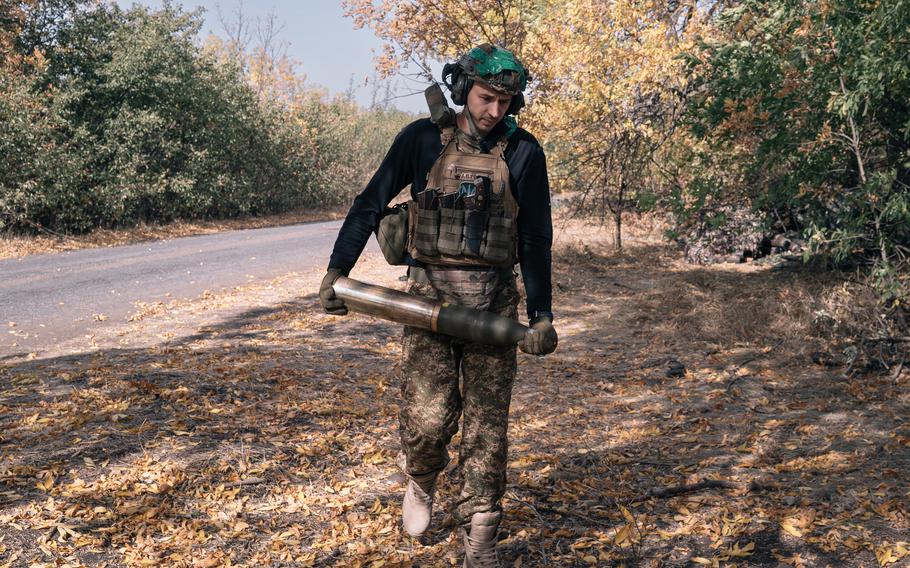
Vitalii carries a shell to be fired toward Russian positions. (Alice Martins for The Washington Post)
The shelter for the 15th had earthen walls and was just large enough for two bunk beds and a pile of electronics. A Kalashnikov rifle hung on one end. Oleksandr and his fellow gun teammate, Vitalii, checked the battery charges on handheld drone detectors. The devices, nicknamed Candy, flash and vibrate with a message saying what type of drone was detected, they explained, but it does not distinguish friendly from enemy aircraft.
The positions can last a couple of months if the front lines remain static, but when either side captures territory, soldiers must relocate fast to keep up with the battle rhythm. And once Russian forces figure out where they are in a windbreak, it is only a matter of time before artillery and drones swarm the position, forcing them to fall back.
The best windbreaks have some elevation, said Maxim, the team’s gunner. Hilltops allow a stronger radio signal for drones and help infantrymen shoot down upon enemies below.
Russian and Ukrainian units have sometimes fought bitterly to control the most valuable windbreaks, he added, with each side understanding the edge they can provide. As the Russians continue their offensive in Donetsk, windbreaks offer them valuable space to mass before their attacks.
“It’s a benefit and a disadvantage,” he said. “The enemy is using them the same way.”
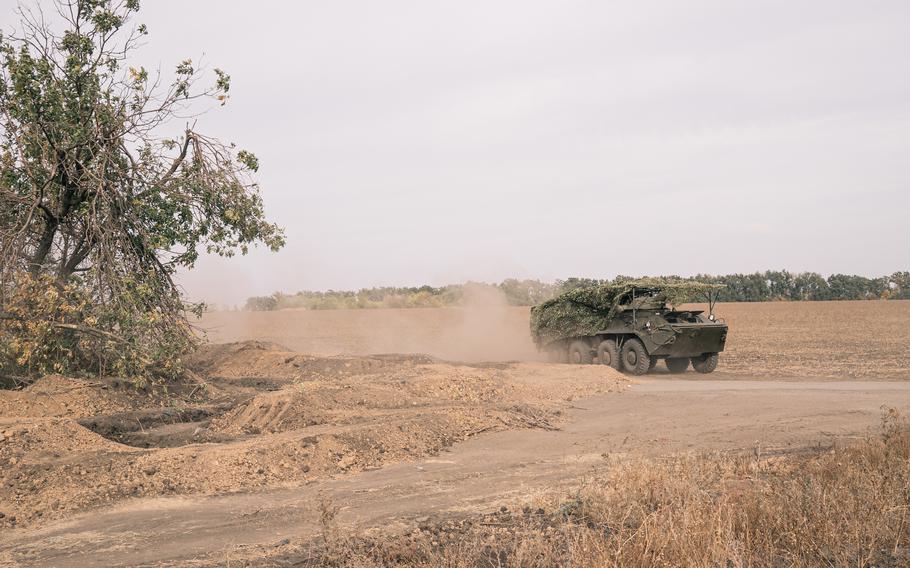
A Ukraine armored personnel carrier emerges from a tree line. (Alice Martins for The Washington Post)
For some soldiers, these belts of trees also offer a rare moment to connect with nature in the midst of the war. Some noted it is more serene to be in the woods than a muddy trench exposed to the elements and enemy fire. Soldiers have watched feral dogs, pheasants and owls wind their way through the trees.
The gun crew fired several more rounds and sat down for more tea in the afternoon, shielded from view by camouflage netting.
Suddenly, the Candy buzzed. “FPV!” the soldiers shouted, warning that a one-way attack drone was detected in the area. A soldier picked up his rifle and chambered a round.
The drone passed without incident, and after a few minutes, the team resumed its occasional artillery fire, ready to go within seconds of enemy forces presenting themselves as targets.
Russian troops don’t know where the position is exactly, soldiers said, buying them some time in the future.
But the cold swirling through the windbreak spelled the beginning of the end of this position. The leaves had begun turning yellow, and as the days blurred into fall, the foliage would grow thinner, forcing the soldiers to find another place to position their howitzer.
The howitzer’s continuous firing also hastened the end of their shelter. More targets meant more shelling, and more shelling increased the chances of being detected. The concussive blasts also degraded the environment, shot after shot.
“Gun!” a crew member yelled. The cannon belched another round, the shock wave reverberating through the canopy.
A few leaves fluttered to the ground, camouflage no more.
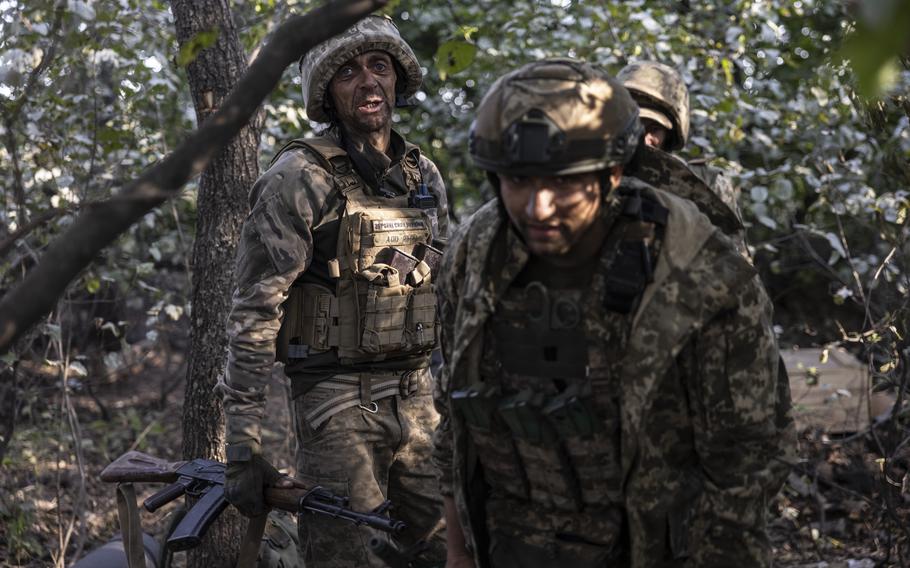
Ukraine soldiers after rotating out from a trench position southeast of Kupyansk. (Heidi Levine for The Washington Post)